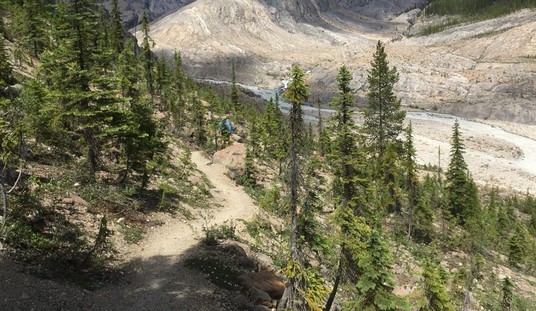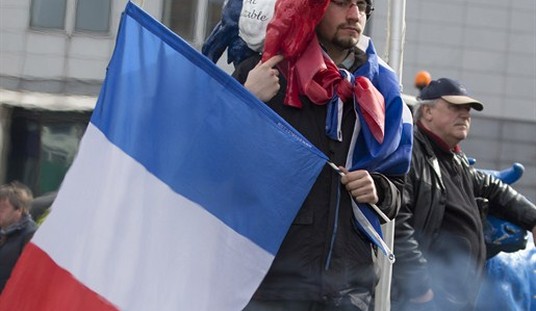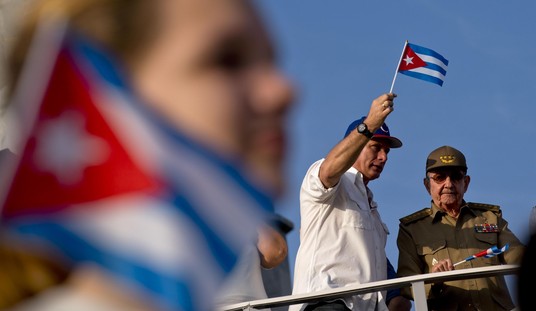I know what you’re thinking. Good Lord, not another Washington Redskins racism story. I can relate to that feeling, since I’ve been sick of the subject since I first heard of it as a young man. Well, fear not… it may have started there, but today we’ll jog off on an interesting side path which has cropped up. It isn’t just sports teams which use names associated with indigenous Americans – far from it – and Dr. James Joyner highlights one example which is right in front of our faces… at least if you’re anywhere near an Army base. He references a piece by Simon Waxman, who argues that the US Army is slurring Native Americans with the names of our helicopters.
In the United States today, the names Apache, Comanche, Chinook, Lakota, Cheyenne and Kiowa apply not only to Indian tribes but also to military helicopters. Add in the Black Hawk, named for a leader of the Sauk tribe. Then there is the Tomahawk, a low-altitude missile, and a drone named for an Indian chief, Gray Eagle. Operation Geronimo was the end of Osama bin Laden.
Joyner starts from the same default position that I do; that naming a war craft after someone is not an insult, but an honor. However, Waxman takes that starting point and twists it in a different direction.
I’ve known for 30 years that we named Army helicopters after Indian tribes. It never once struck me as problematic, much less offensive. Like Daniel Snyder, owner of the Washington Redskins, it’s always seemed obvious that the names were intended to honor rather than demean. Indeed, Waxman concedes that it’s so. Alas, he argues,
Why do we name our battles and weapons after people we have vanquished? For the same reason the Washington team is the Redskins and my hometown Red Sox go to Cleveland to play the Indians and to Atlanta to play the Braves: because the myth of the worthy native adversary is more palatable than the reality — the conquered tribes of this land were not rivals but victims, cheated and impossibly outgunned…
It is worse than denial; it is propaganda. The message carried by the word Apache emblazoned on one of history’s great fighting machines is that the Americans overcame an opponent so powerful and true that we are proud to adopt its name. They tested our mettle, and we proved stronger, so don’t mess with us.
I’m sorry, but this seems like utter nonsense. When we named one of our most recent aircraft carriers the George H. W. Bush, were we seeking to demean and insult the former President? When we name our nuclear submarines (and formerly battleships) after states, are we saying they are terrible places to live? (Okay.. in the case of the USS Illinois you may have a point.)
I believe the military maintains a long held respect for the Amerindian nations we faced in battle in the nation’s early days. Massively outgunned in terms of weapons and other technology, many of them fought fiercely and achieved legendary status. The Army has a long tradition of paying respect to those who have fought valiantly and honorably against us.
And further, it’s not as if these are derogatory names… they are the actual names of the tribes as translated into English. I can, to a point, understand that the term “redskin” is described as a pejorative, so there will be people who have a problem with it. But Iroquois is a nation. You can imagine that we might decide to name a class of aircraft “The Irish” but we wouldn’t call them the drunken paddies. We don’t tend to name a lot of things after African tribes, but I can’t imagine people being offended by using The Tzambaro for a class of jet fighters, while we wouldn’t consider slapping the n-word on them.
Accusing the Army of being insulting to the native tribes through the naming of helicopters looks like a case of Waxman digging too hard to find something to complain about. And as Joyner points out in an update, the tribes don’t seem that upset either.
Wafts of the earthy aroma of wild sage filled the air as Oglala Medicine Man Roy Stone offered a prayer, blessed the South Dakota National Guards newest aircraft, the UH-72A Lakota Light Utility Helicopter, then tied an eagle feather onto it.
Native American Veterans groups from across the state stood sentry as more than 600 people watched the dedication ceremony that was held in sacred He Sapa (Black Hills) with the image of Crazy Horse one of greatest Lakota warriors to ever walk Ina Maka (Mother Earth) as a backdrop.
During the ceremony the new Delta Company, 1/112th Aviation Company of the National Guard unveiled an official patch that also honors the heritage of South Dakota Native people.
That seems to be the point, guys.








Join the conversation as a VIP Member